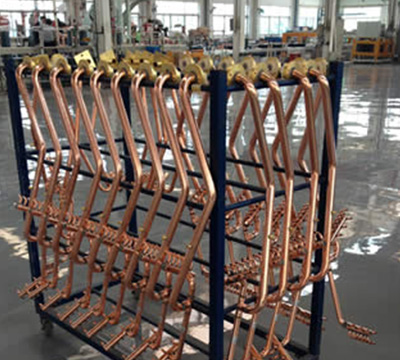During transporting the fresh or frozen good, it is very uncomfortable and dangerous if you drive a van without air conditioner working on a hot day. Thus diagnosing the reason that your air conditioning isn't working will help you determine whether the problem is one that you can fix yourself or you need to take it to a repair shop. Also you are less likely to be taken advantage of at a repair shop if you already know why your air conditioner is not working.
Method 1. Collecting Initial Information
① Turn the air conditioning on while the van is running. The best setting for diagnosis is "fresh air" (not recirculated) with the air blowing out of the center vents in the dash and the AC turned on.
--Start with the fan speed turned to its highest setting.
--If your van has a "Max AC" setting, select that option.
② Listen for unusual noises coming from the air conditioner. Noise could indicate that there is a problem with your compressor and that it needs repair or replacing.
③ Feel the air coming out of the vents. You will need to know if the air is cold, room temperature, or hotter than the air around it. Also note if it starts cold but turns warmer, or if it is usually warm but blows cold intermittently.
④ Notice the air pressure. Turn the air pressure to the high and low settings and see if the airflow changes like it normally does.
⑤ Smell the air coming from the vents. If there are unusual smells, you could have a leak. You may also need to change your cabin air filter.
⑥ Inspect your van's fuses. A blown fuse can cause your air conditioner to stop working.
Method 2 Diagnosing Airflow Problems
① Check all of the vents. Be sure that air pressure is coming out of the vents that you have selected. Move the vent selector to see if the air moves to the proper vents.
--If changing the selected vent does not alter the flow of air, you likely have a blend door problem, which will require replacing the doors inside the dash that determine the direction of the air flow.
--Blend doors change position when the temperature selection is changed, blocking the flow or permitting the flow of either hot or cold air.
--Sometimes an AC system with a mode door problem could be working fine, but the air flow is being directed somewhere else, like back out to the engine, instead of into the car.
② Look at your cabin air filter.
--It is possible that your cabin air filter is so blocked that it is interfering with your air pressure, and replacing it will be a relatively easy an inexpensive fix to your problem.
--Your car manual may have instructions on replacing the cabin filter. If it doesn't, try searching online for "replace cabin air filter" followed by the year, make, and model of your car.
③ Check for a blower motor problem. The easiest way to do this is to try turning on your heat. If you have weak air flow when the heat is on as well, your blower motor may have gone out.
--A blower motor may have a resistor problem if your air only blows on the high setting but will not blow on a lower setting.
Method 3 Diagnosing Air Temperature Problems
① Find the front of your AC condenser. It is normally located in front of your radiator. If there are leaves or other dirt or buildup blocking it, remove them and clean the area.
② Look under the hood at the AC compressor clutch. If your air pressure is normal but the air is hot, you may have a compressor problem. Checking to see if the compressor clutch is engaging is a simple visual inspection.
--Your car should be running with the AC on to check the compressor clutch.
--The compressor looks like a small motor with a large wheel on the end. The wheel (which is the compressor clutch) should be spinning. If it is not spinning, you have a problem with your compressor.
③ Check the tension on the belt of the compressor. It should be tight. If it is loose, you need a new compressor belt.
④ Find any coolant system leaks. One of the most common AC temperature problems is low refrigerant. The AC system is closed, so refrigerant should not be lost unless there is a leak.
--Look for oily residue on or around hoses that attach AC components together. Oily spots may indicate a refrigerant leak.
--You may consider using an electronic leak detector, which can detect much smaller quantities of refrigerant.
--There are also some testers that use dye, UV light, and protective glasses to find leaks.
--If you do find a leak, you will likely need to hire a professional to repair the leak. You will probably need new parts too, as many of the components cannot be repaired or patched.
⑤ Check for freezing. If your air conditioner blows cold initially but then stops being cold after some use, it could be freezing. Excess air and moisture in the system may lead components to freeze .
--Freezing can also be caused by an oversaturated receiver/drier or accumulator.
--Turning the system off for a while and letting it thaw will temporarily solve the problem.
--If the problem is persistent, you may need your system to be flushed or evacuated with a vacuum pump.
Lastly, if you have any question or troubles about
van air conditioner or
bus air conditioner system, or
transport refrigeration units, welcome contact Guchen Company and we are already pleased to serve you at any time !







